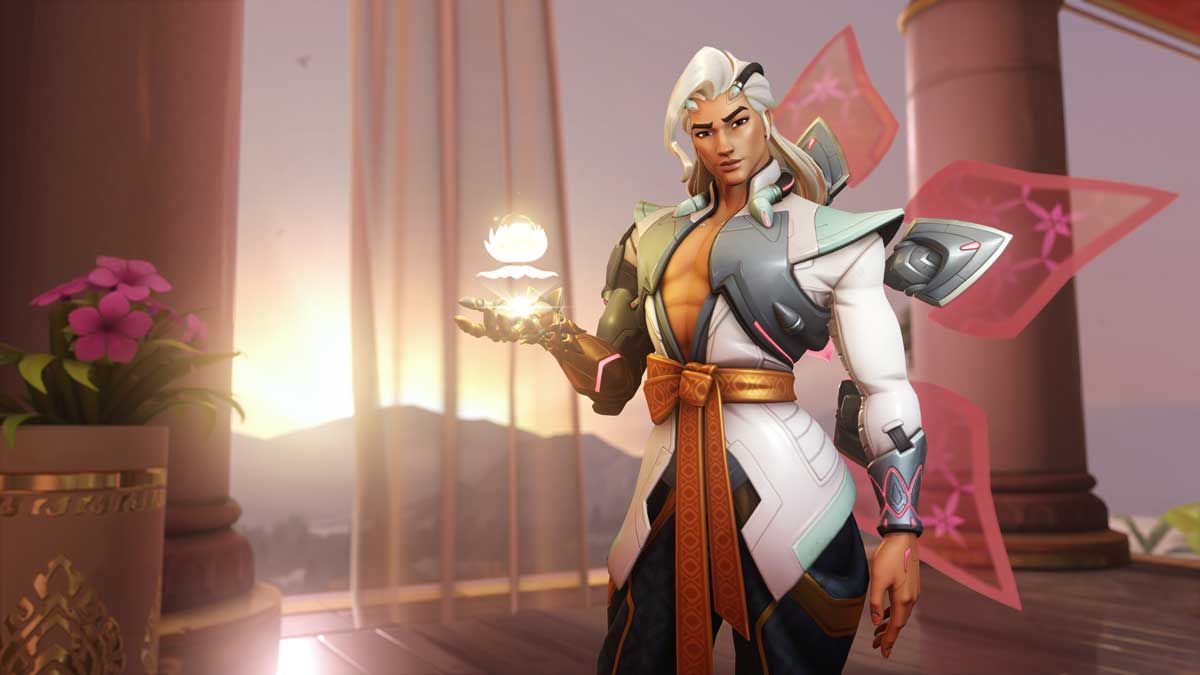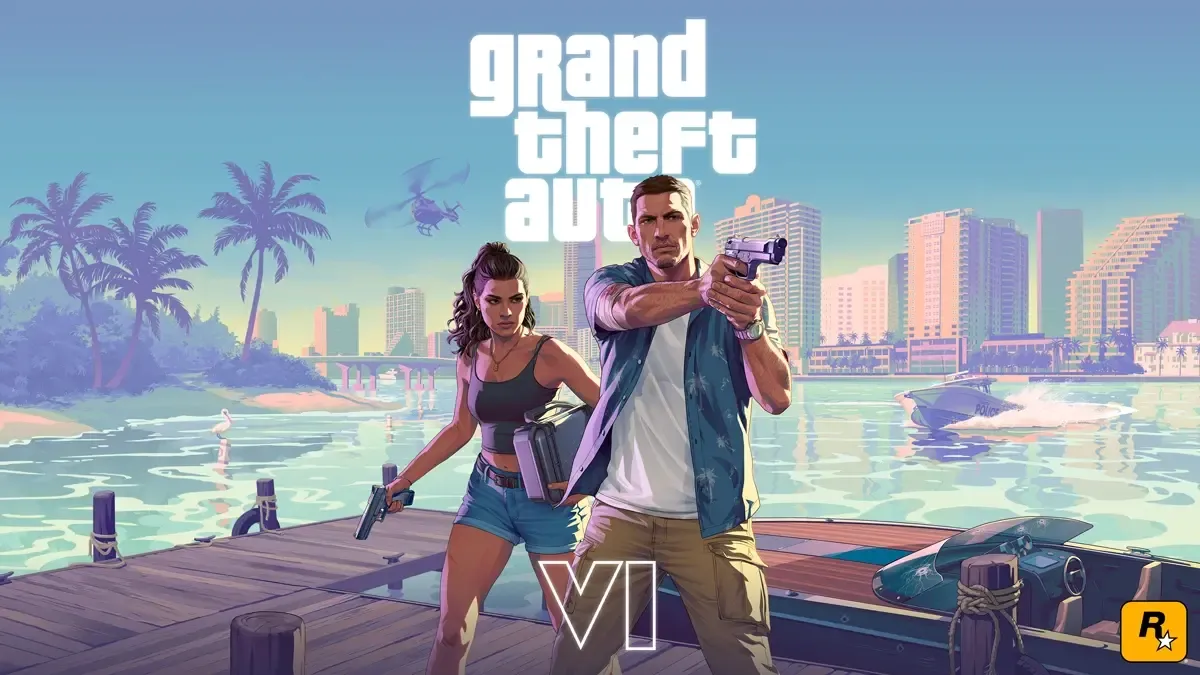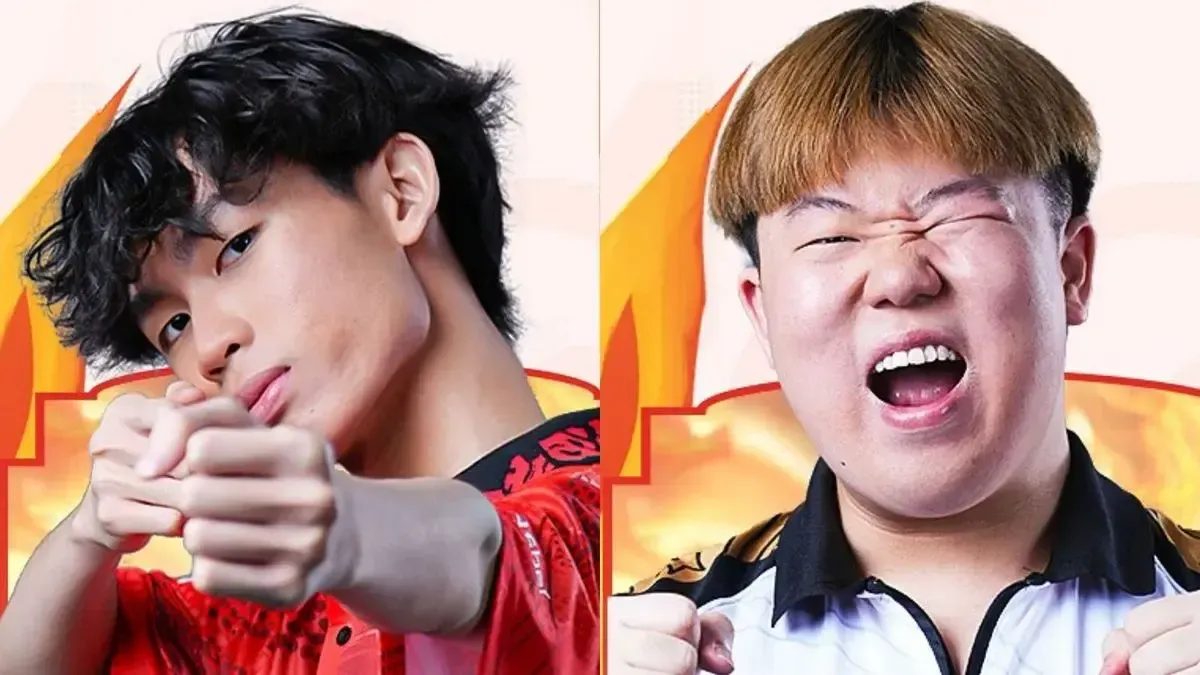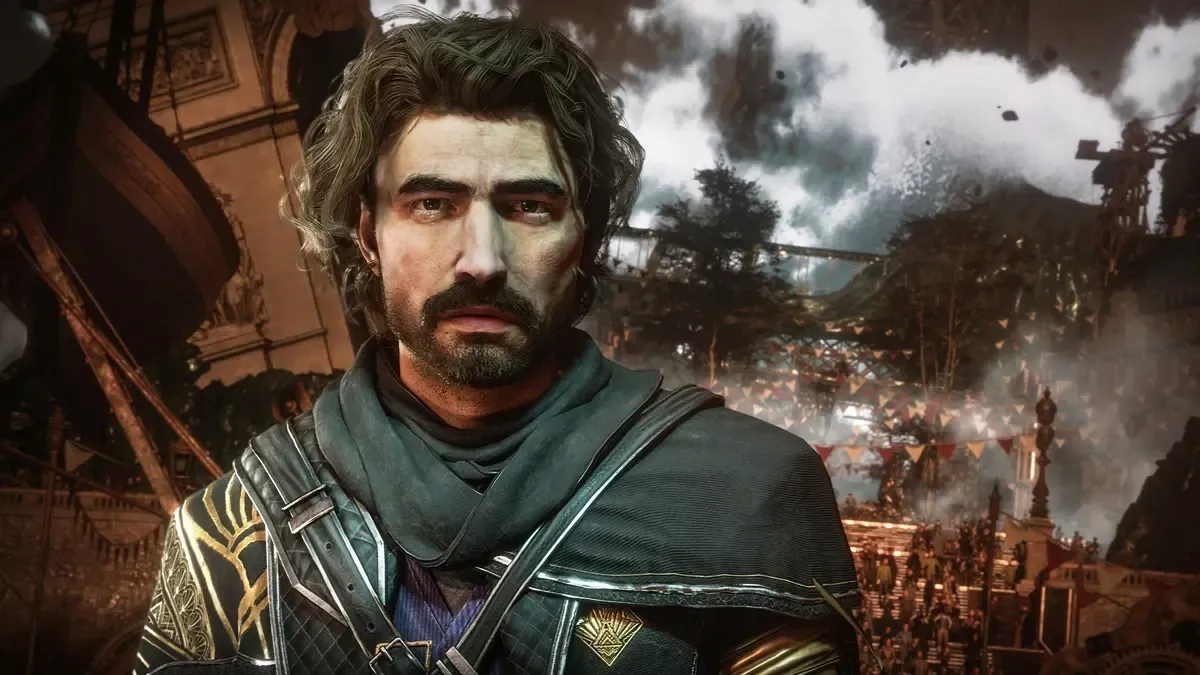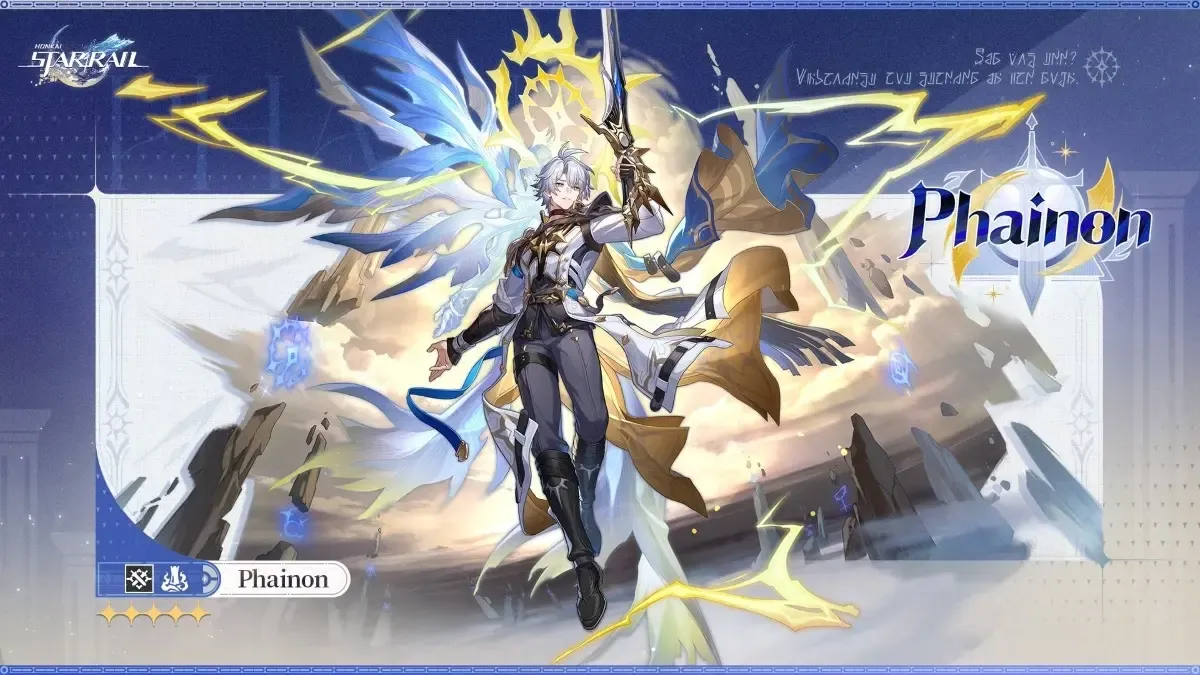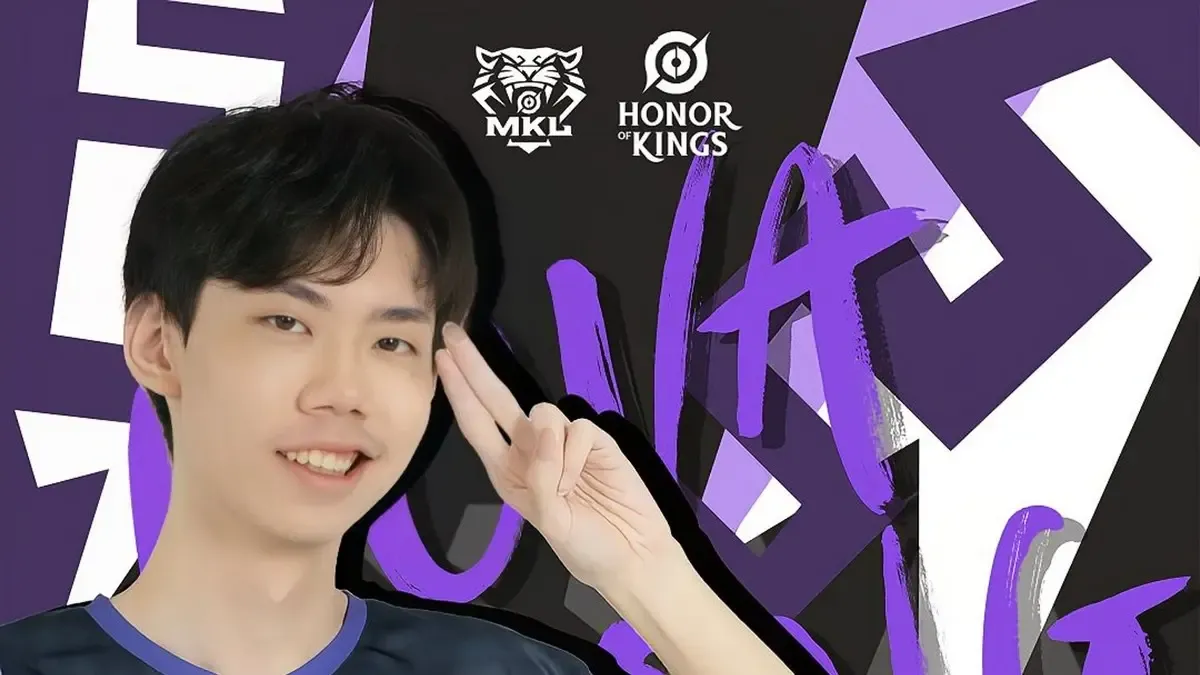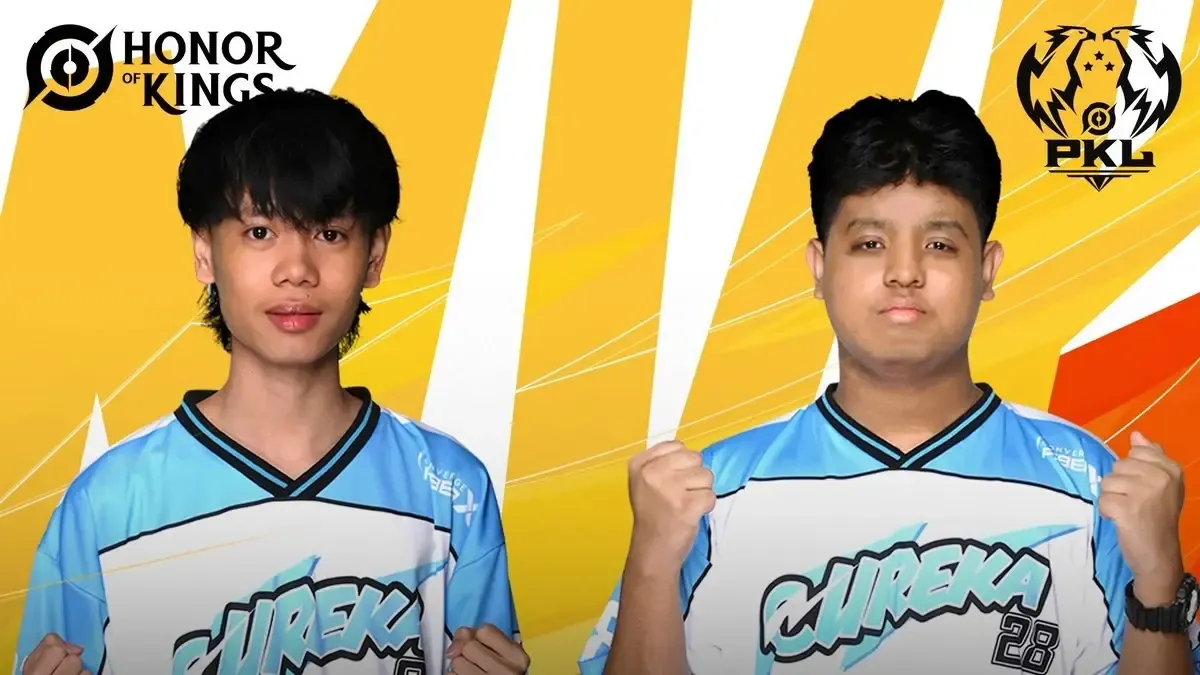Image: Blizzard Entertainment
We interviewed Overwatch 2’s developers about the game’s all-new Thai hero, Lifeweaver.
Do you hear that? It’s a million Support players sighing in relief as they learn about Overwatch 2’s newest playable character: a Support hero named Lifeweaver. We had the chance to sit down with developers from Blizzard Entertainment about their design process what they hope to achieve by introducing the ex-Vishkar scientist to the game, as well as the hero’s fundamentally Southeast Asian roots: Niran PruksaManee AKA LifeWeaver hails from Chiang Mai, Thailand.
We spoke to Chonlawat Thammawan (Takki), Senior Tech Artist, Gavin Jurgens-Fyhrie, Lead Narrative Designer and Alec Dawson, Lead Hero Designer from the Overwatch team along with other members of the media. Here’s what they had to say!
Note: this interview has been condensed and edited for the sake of clarity.
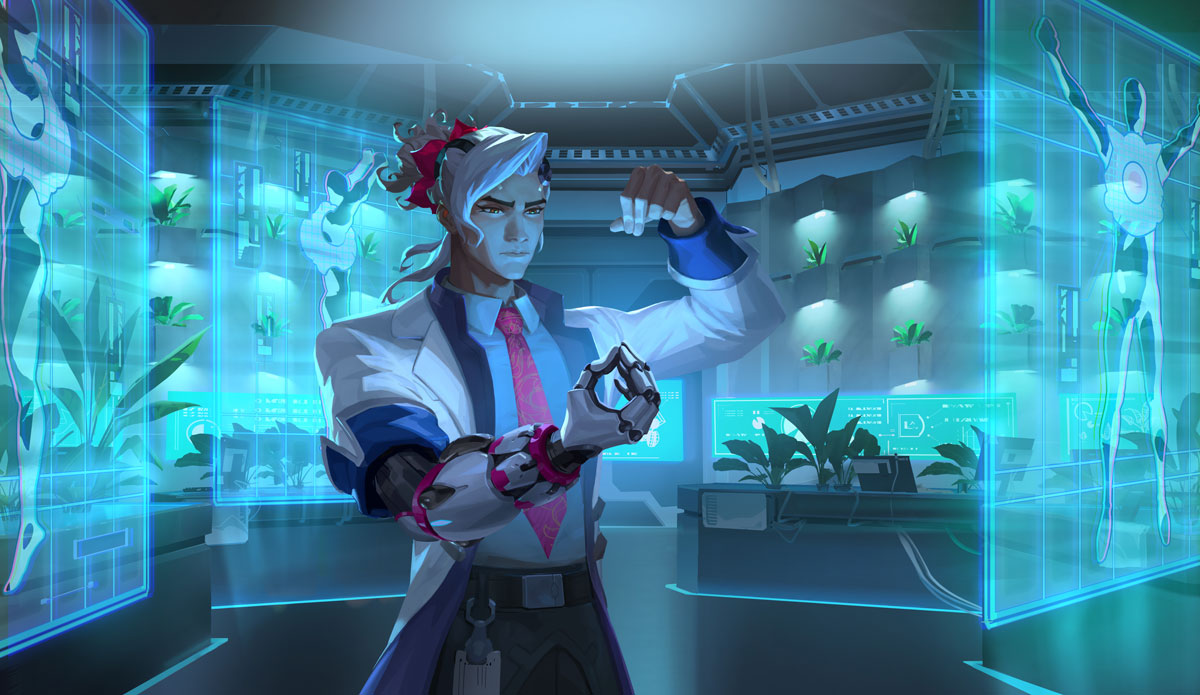
Do you have any concerns about what might happen if a Lifeweaver goes rogue and uses their powers for evil? For example, if you leap off a cliff and use Life Grip on a teammate, you could cause some mutually-assured destruction.
Alec Dawson (Lead Hero Designer): There are things in there that actually protect against that. We’ve been fixing bugs but when we do go live, those will be protected. If players do find specific ways to grief their allies, that’s something we are going to take action on if we see that repeatedly. If it’s intentional, it’s something we'll consider for penalties as well.
Gavin Jurgens-Fyhrie (Lead Narrative Designer): On the flip side, that ability is so dramatic. I saw a video from the content creators, where they had a Doomfist dive into the enemy team with low health, and his Lifeweaver just pulled him right back to safety. We would have recorded that for a gameplay trailer if we'd captured it first. But it was just such an incredible play, and so dramatic, and so memorable. I can't wait to see players make use of that stuff.
Who do you think will enjoy playing Lifeweaver the most?
Alec: I think Support players who really enjoy helping their allies will like Lifeweaver. If someone plays Moira, they want to dive into the backline and do some DPS, but you might want to purely assist your allies - whether it’s putting them in a better position, pulling them out of trouble or just healing them. You can actually dish out a ton of healing if you’re ready for the situation.
Gavin: Well, first of all, as a Moira main, I have no idea what you’re talking about. Diving ino the backline? That sounds so irresponsible. Second of all though, I think Lifeweaver will appeal to a lot of different people. There’s so much there. With the auto aim, he’ll appeal to anyone just starting off in Overwatch, but there is so much to master for this character and so much to learn.
What’s the process of designing a new hero like Lifeweaver, who you’ve mentioned started with the concept of a plant-themed character?
Chonlawat Thammawan (Takki, Senior Tech Artist): In the past, we’ve known a character first, and then the character is just so cool that we make them into a hero. Other times, we would get the gameplay locked in first, and then we figure out the visual of the character. For the previous example, we had Ash from the cinematic who became a hero. For Lifeweaver, we had this plant archetype with an ability to keep in mind first, and then we decided to put a visual to it later.
Gavin: The teams have been getting more and more collaborative as we've gone into Overwatch 2 to develop these characters together. We’ve been excited about a plant hero for a long time, but when the narrative team started trying to figure out what we were gonna do with a plant based hero, we had no idea. We saw the early prototypes in the art. And we're like, “Well, that doesn't look like real plants at all. That looks sort of transparent, is that hard light?” They’re like, “Yeah, it's hard light.” And we went, “Oh, we know what to do with this now!”
And it became a sort of natural evolution. We knew that this is a character who's related to Vishkar in some way. We already have Symmetra, who’s very much a Vishkar loyalist, or at least is sort of in trouble with Vishkar at the moment. So it made sense for us to develop a character who is sort of the person who fell out of Vishkar, who did something that they didn't like and rebelled. And that's what we have with the creation of bio light, which is what you see, adorning him all over the place. It’s sort of a living light.
What is the team’s thought process behind designing and releasing new heroes? Do they get priority depending on how much they contribute to/change the current meta?
Alec: What we’re working on here was about a year in advance. And it comes from a place of what we're passionate about. What do we want to add to the game in terms of new abilities, in terms of new narratives? We started from a place mechanically, of trying to introduce a new hero who had an easy-to-use healing mechanism. Similar to Mercy, Lifeweaver's healing is self-targeted. It actually hones in on allies if you charge it up. It doesn't miss. That’s one of the places we started and from there, we brought in other teams, we have a bunch of new abilities coming in with narratives, really forming a story. And then eventually, you know, I think there's meetings about who exactly it’s going to be as we go forward.
Takki, you did one of these meetings, right?
Takki: Yeah, so originally, we had this idea of a plant healer, as we mentioned before, but we don't quite know who they are, we don't know the nationality. We have a silhouette that we really like and the archetype. As we get narrative help and as I pitched the Thai skin that may have inspired them to explore Lifeweaver as Thai, the visuals solidified as more people got involved. Even on the ability side, we have this ability that came from a fun idea from a team member - the Parting Gift. When you kill Lifeweaver, he drops these health packs in the form of flowers that your ally or even enemy can pick up. It’s just one of the ideas that sprouted from ideas like, “What if when he dies, his backpack falls down and he loses his life energy? What if that flower disappeared? What if we can pick it up like this?” This kind of thing happens all the time in Hero development and it's just something very exciting and fun for the team.
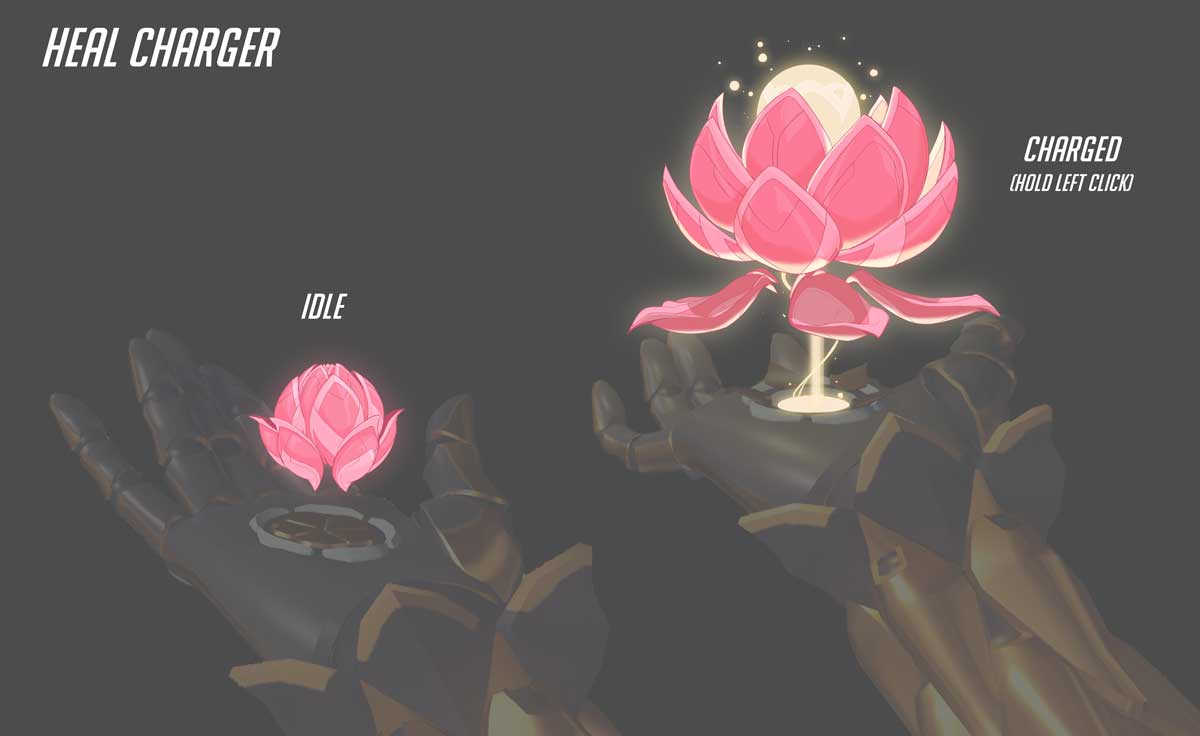
Which heroes do you think will synergise with Lifeweaver best? What kind of team comp will he fit into?
Alec: We’ve been seeing a lot of teams playing with aggressive flankers, whether it be a Tracer or Genji, going in because then they have that level of protection. And then on the support side, you know, Lifeweaver, one of my favourite weaknesses is when he falls behind on healing. He's very good at anticipating if he’s prepared, but sometimes it does take time to charge up your healing. If you fall behind there, then you're going to need a support who can help you actually have some burst healing like Ana or Baptiste to make it easier to keep the whole team up.
Takki: You can use the other two abilities to save an ally who may not have a lot of mobility like Ana. Bring them to a safe area and use your primary healing on the way.
How much healing does his Parting Gift do?
Alec: It heals enemies for 75 and heals your allies for 250.
Lifeweaver is the 37th hero Overwatch has put out. How has the process of creating and evolving these heroes changed over the years?
Gavin: We're always excited because each hero represents a new challenge for us to find out where we go next, right? We have a vast page of all these hero ideas that we're working with, and they're divided into sections. Like, “These are the heroes in the lore that we want to cover in the future. Here are the heroes that we think can have a really cool look. Here are any heroes that we think would have a really cool gameplay hook.” And then Alec and his team do their magic and come up with these wonderful ideas, and the narrative team too. We all start brainstorming together and have a wonderful time. In recent years we've moved more and more towards that sense of collaboration. We're all trying to push each other up, like Lifeweaver, right?
What was the most fun you had in the process of creating Lifeweaver?
Gavin: Uniquely on the narrative side here, we usually have one person assigned primarily to a hero. This time, however, just because of scheduling, tomfoolery and general busyness, pretty much every single person on the narrative team contributed to a good portion of this character. So it's probably the most mass-collaborated hero we had, and it was a lot of fun. It was so much fun.
Alec: Lifeweaver can be actually one of the hardest heroes to master. I think that's one of the things that we'll be looking at when he launches, because we know he’s hard to truly get the hang of. Even though there is the ease of healing, utilising all of his abilities effectively can be very difficult. In my first few play sessions, I thought that his healing might be a little low or I wouldn’t understand how to bounce off of the platform, but that mastery over time, it feels really great. Once you start really getting a rhythm of Lifeweaver, you understand how to charge up the healing, and you're anticipating when your teammates are going to take damage. Mastering this hero feels very good, and you can see that progress from your first game to say even your 20th game.
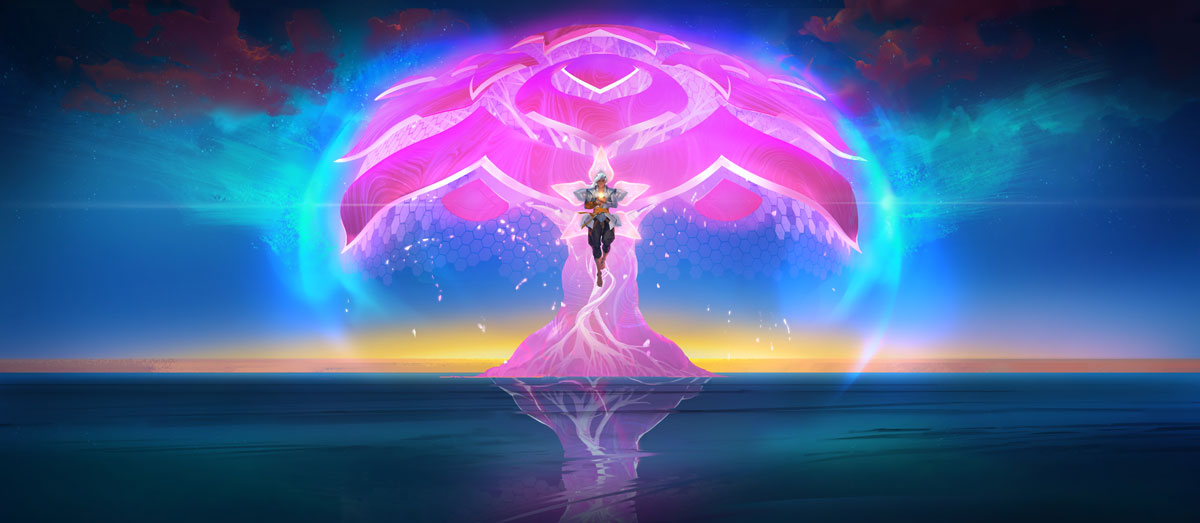
There is a considerable lack of Support heroes compared to Tanks and Damage. Is this because it’s easier to design Tank heroes compared to Support? What are the unique challenges for developing heroes in this role?
Alec: Each role definitely has their own unique set of challenges. In particular, when we introduce Supports, we want them to bring something unique to the game, not just in terms of how they feel and how they play. One of their abilities should aim to bring something totally new to the scene.
With Lifeweaver, we’re adding another Support. Our next hero will also be a Support. So as we look at Overwatch 2, you'll see the Support roster grow. We're going to keep doing this thing of two Supports for every one Tank and one Damage. So out of four heroes, say two Supports, one Tank, one Damage hero. We want to increase the roster because you know, two players are choosing from that and it is actually our smallest collection of heroes at the moment.
Ramattra and Lifeweaver make two characters in a row who have pretty complex kits with more than a few abilities to master. Is this deliberate introducing Heroes with so many abilities like these, as opposed to more streamlined hero kits like Cassidy’s or Hanzo’s?
Alec: It's more that these two heroes came out next to each other than anything else. Overall, we're still looking to add some other heroes who may have more streamlined kits, maybe a bit easier to understand. In terms of how many buttons we’re using, Lifeweaver has quite a few. The weapon swap and his abilities, and such. Throughout Overwatch 2, you'll see a number of different styles of heroes, ones who may come off as more simple ones and others who might be more complex like Ramattra.
How do you see Lifeweaver shaking up the meta in professional play?
Alec: I'm definitely excited to see how the pros handle Lifeweaver. Life Grip, in particular, is one of those things I can't wait to see that level of play for. Lifeweaver weans on teamwork first, and that’s going to happen at the highest level. I'm excited to see the pro players unlock his full potential.
Are there any Asian elements in Lifeweaver’s design players might have missed out on?
Takki: So, the pants he's wearing might be a little unusual for a lot of people who don't know Thai traditional garments. It’s called chong kben, it makes for an interesting silhouette. Thai patterns are hiding everywhere in his kit, even down to the type of flower he uses. It's a lotus, which is pretty big in day-to-day life in Southeast Asia. He has a nickname - if you have any Thai friends, you're gonna know that Thai people have nicknames. Nobody calls me by my full name, my nickname is Takki. Lifeweaver has a nickname which is ‘Bua’, which means something like ‘water lily’.
On the narrative side, we also have a lot of voice lines that are native to the character. What I really like about Overwatch is that we have a space for characters to speak their native language, which is highly uncommon for characters from Thailand. We rarely have characters from Thailand, especially in videogames. What is even more rare, is a Thai character who gets us to speak Thai, so I'm really excited for our Thai players to hear their own language in Overwatch.
Besides future interactions with Symmetra, can you tease any interesting dynamics players might see play out between Lifeweaver and other heroes on the roster?
Gavin: There's a number of conversations that I think people are really going to enjoy with Lifeweaver. What we really are going for here is a character who can be funny without being mean, someone who's warm and witty, but never really cuts people down. He lifts them up. He is a person who makes people feel welcome. So I think you're going to see that in his conversations. You're going to see how he regards people with kindness, how he can be funny without making them feel bad. How he makes people feel appreciated. I think some of the ones that stick out to me right now are with Lucio… there's a good conversation there. There are some conversations with Baptise that I'm very fond of. You'll also see conversations with people he doesn't get along with. He's not a fan of Moira, more because of her approach to science as opposed to his, but you can see how he phrases it without ever stooping to her level.
Overwatch 2 Season 4 launches in April, with a brand-new Battle Pass and hero.

